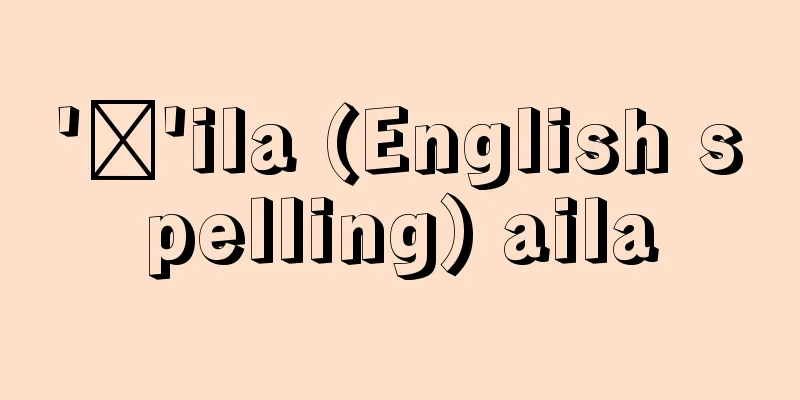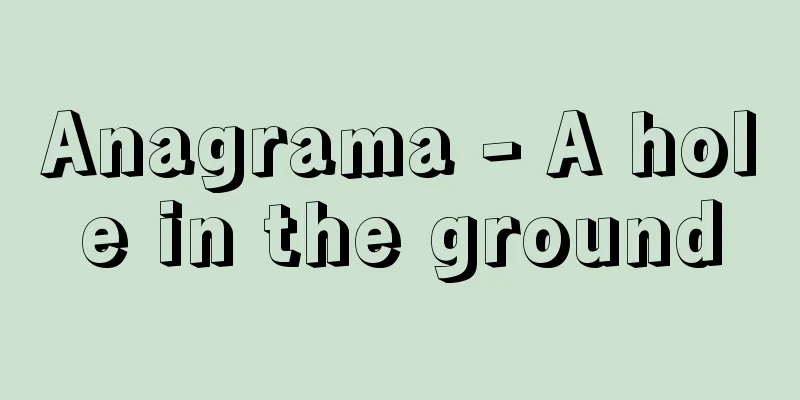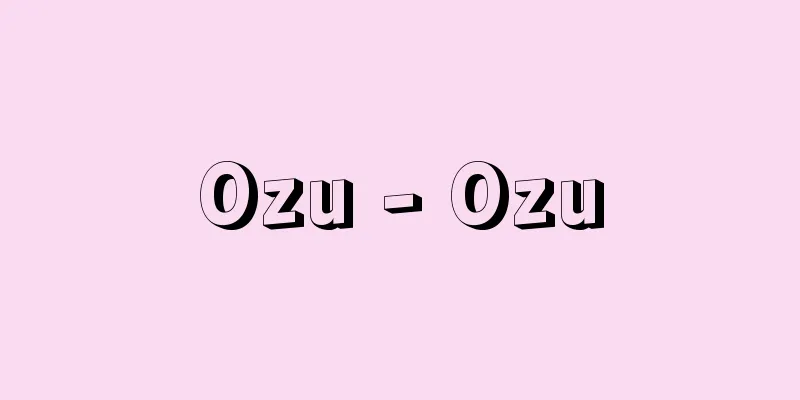Japanese characters - kokuji

|
This is a word that is used in various ways and is roughly used as follows: (1) A general term for the characters used to write the national language. In modern Japanese, this includes kanji, hiragana, katakana, roman letters, and Arabic numerals. "Kokuji" in the phrases "kokuji problem" and "kokuji improvement" has this meaning. (2) Refers to kana as opposed to kanji. Also called waji. This usage was mainly used in the Edo period and is not used much today. (3) Characters newly invented in Japan based on Chinese characters. Also called Japanese kanji. Of the above, the most common meaning is (3). These were created to express things that do not exist in China or ideas that are difficult to express with normal Chinese characters, such as "touge" (mountain pass), "hatake" (field), "tsuji" (crossroads), "kogarashi" (cold wind), "nagi" (calm), "shitsuke" (discipline), and "iwashi" (sardine). Arai Hakuseki chose 81 characters as kokuji in his "Dobun Tsukou," and Ban Naokata (1789-1842) listed 126 characters in his "Kokuji Kou," but it is still unclear whether some characters are kokuji or not. As a rule, kokuji do not have a "sound" but only a "reading" (however, "hataraki" (work) has the sound "dou", and there are some that only have a "sound" such as "kou" (fish), "sen" (gland), and "byo" (pin). The method of construction is mostly based on compound ideas (combining components to show new concepts), as in the Kyoshen Six Scripts, such as "a tree offered before the gods" becoming "sakaki", "rain falling downwards" becoming "shizuku" (drops), "the boundary between going up and down the mountain" becoming "toge" and "the wind that withers trees (ki)" becoming "ka" (bloom). [Masayuki Tsukimoto] ©Shogakukan "> List of Kokuji (according to "Kokuji Ko") Source: Shogakukan Encyclopedia Nipponica About Encyclopedia Nipponica Information | Legend |
|
種々の意味に用いられる語で、大略次の用法がある。 (1)国語を書き表すのに用いる文字の総称。現代日本語では、漢字、平仮名、片仮名、ローマ字、算用数字などである。「国字問題」「国字改良」というときの「国字」はこの意味である。 (2)漢字に対して仮名をさす。和字ともいう。この用法は江戸時代が中心で、現在はあまり用いられない。 (3)中国でつくられた漢字に倣って、日本で新たに案出された文字。和製漢字ともいう。 以上のうち、普通には(3)の意味で用いられることがもっとも多い。これは、中国に存在しない事物や、通常の漢字では表現しにくい観念を示すためにつくられたものであり、「峠(とうげ)」「畑(はたけ)」「辻(つじ)」「凩(こがらし)」「凪(なぎ)」「躾(しつけ)」「鰯(いわし)」などがその例である。新井白石(あらいはくせき)は『同文通考』で81字を取り上げて国字とし、伴直方(ばんなおかた)(1789―1842)の『国字考』では126字をあげているが、国字であるか否かの認定がまだ不明確なものもある。 国字には、原則として「音」がなく「訓」のみが存在する(ただし、「働(はたらき)」には音「ドウ」があり、「鱇(コウ)」「腺(セン)」「鋲(ビョウ)」などのように「音」のみのものもある)。その構成法は、許慎(きょしん)の六書(りくしょ)でいえば、会意(構成要素を組み合わせて新しい観念を示す)によるものが大部分で、「神前に供える木」が「榊(さかき)」、「雨が下に落ちる」のが「雫(しずく)」、「山の上りと下りの境界」が「峠」、「木を枯らす風(几)」が「凩」になるのがその例である。 [月本雅幸] ©Shogakukan"> 国字一覧(『国字考』による) 出典 小学館 日本大百科全書(ニッポニカ)日本大百科全書(ニッポニカ)について 情報 | 凡例 |
Recommend
percutaneous transhepatic cholangiography
…In such cases, a direct contrast method is used,...
Jules Mazarin
French Prime Minister and Cardinal. Born in Pessi...
Yuzu (Citrus junos Sieb.ex Tanaka)
An evergreen tree of the Rutaceae family, it is a ...
Cassia glanca (English spelling)
…[Mitsuru Hotta] [Aya Nitta]. … *Some of the term...
Common cold - kanbou (kaze) (English spelling)
What is the disease? The airway that passes throu...
Streamline - Ryusen
A curved line in a flow, the tangent of which at ...
Development Assistance Committee
Development Assistance Committee (DAC) is an orga...
Dall's porpoise (English spelling)
...A mammal of the family Phocoenoides. One of th...
Sardine cloud - Iwashigumo
A type of high-level cloud made up of ice crystals...
Bohai Oil Fields
A general term for the oil fields along the coast ...
Koblenz - Koblenz (English spelling)
A city in the state of Rhineland-Palatinate in mi...
Xinzheng Tomb - Xin-zheng gu-mu
A Spring and Autumn period tomb was discovered in ...
Tanala people - Tanala (English spelling)
An ethnic group living on the island of Madagascar...
Representative value - Daihyochi
If you organize given data, such as a record of t...
Ural-Kuznetsk Industrial Complex
...From around 1997, many companies were establis...
![Nishiki [town] - Nishiki](/upload/images/67cc6cae55fff.webp)
![Nisshin [city] - Nisshin](/upload/images/67cc6efe44927.webp)







